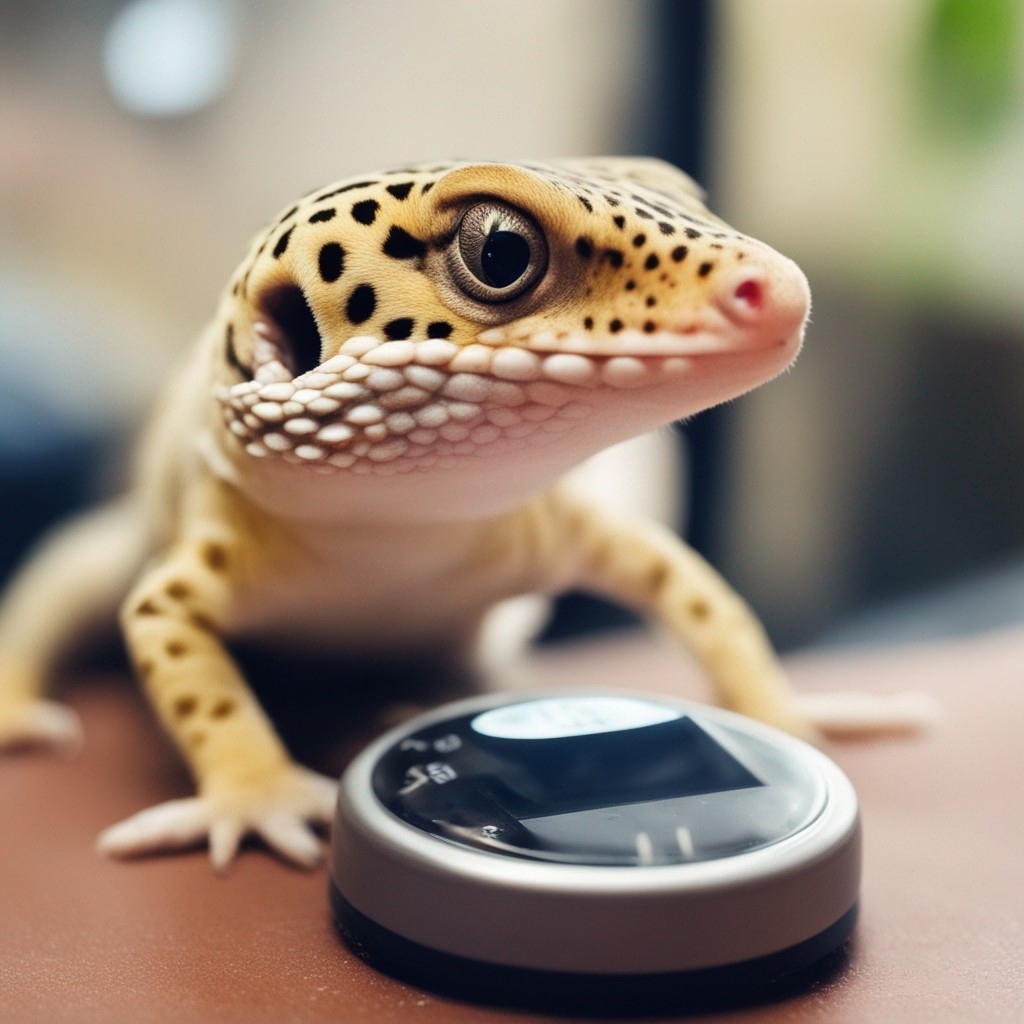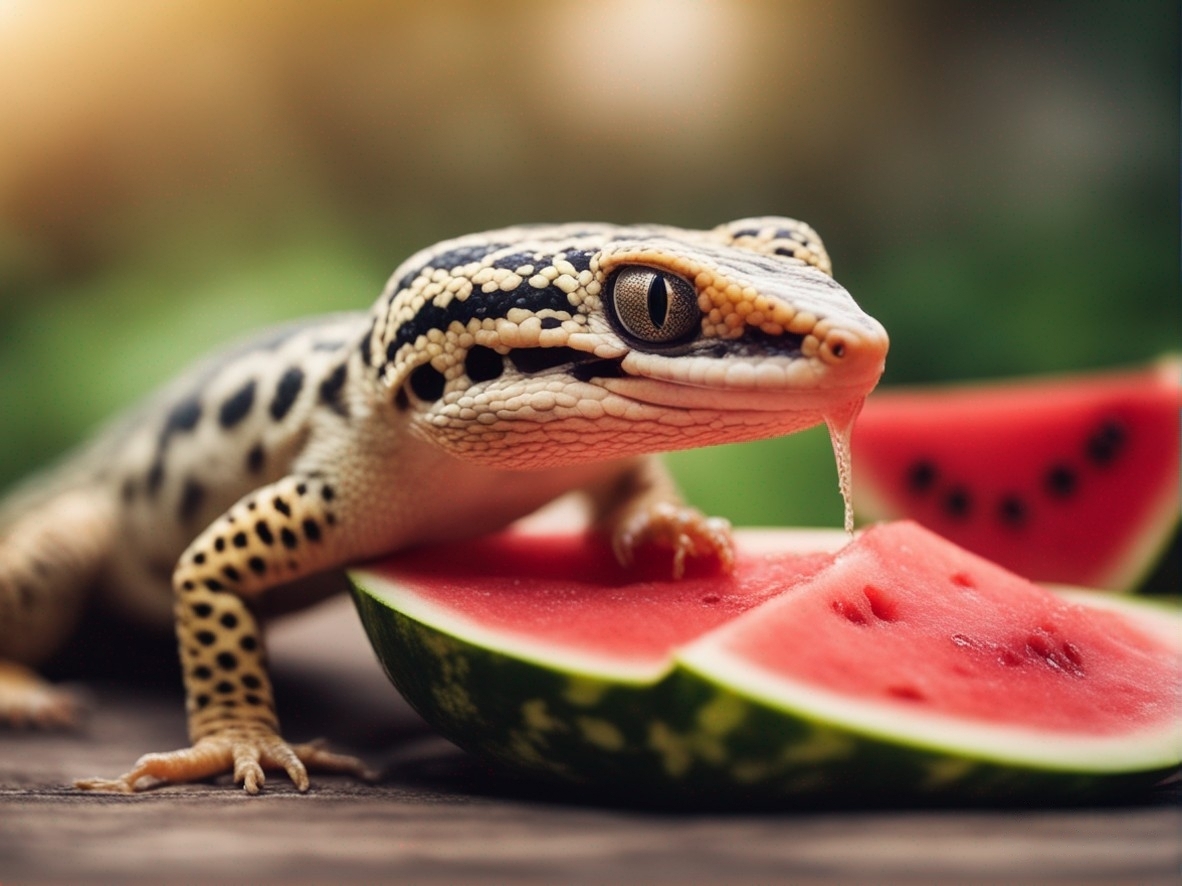You’ve just adopted a beautiful leopard gecko, and you want to make sure she is healthy and happy. You know that feeding her is an important part of this, but you may be wondering how often she needs to eat, or how long can leopard geckos go without eating? To help answer these questions – and more – let’s take a look at the unique needs of your new pet.
We’ll discuss factors that influence fasting time for leopard geckos, the potential benefits of fasting, signs of malnutrition to watch out for, as well as tips on monitoring your gecko’s eating habits. With the right information in hand, you’ll be able to provide your pet with the best possible care.
Key Takeaways
- Leopard geckos can go without eating for weeks due to their ability to store fat reserves.
- Proper monitoring and care of leopard geckos’ eating habits is essential to maintain their health during fasting periods.
- Nutrition plays a crucial role in leopard geckos’ overall health, growth, development, and immune system support.
- Regular checkups with a veterinarian are significant for early detection of health problems and prompt treatment if necessary.
Overview of Leopard Geckos
You may be wondering what leopard geckos are, and how long they can go without eating – so let’s find out! Leopard geckos (Eublepharis macularius) are a type of lizard native to parts of Asia and the Middle East. They are popularly kept as pets due to their docile nature, ease of care, and interesting behavior. In terms of physical structure requirements, leopard geckos typically measure 7-10 inches in length when fully grown.
They have relatively short legs and a thick tail that acts as energy storage in times of food scarcity. When it comes to diet choices, leopard geckos will eat almost any kind of insect or small vertebrate they can catch. However, they also need additional sources of vitamins and minerals such as commercial supplements for optimal health.
As such, without proper nutrition their lifespan is reduced significantly. With this knowledge in mind, let’s explore the factors that influence fasting time for these lizards.
Factors That Influence Fasting Time
Fasting time in leopard geckos is affected by three key factors: age, temperature, and activity level. As a leopard gecko gets older, its fasting time increases due to increased metabolic efficiency. Temperature also plays a role as colder temperatures tend to slow down metabolism which leads to longer fasting times. Lastly, activity level has an effect on fasting time since more active animals need more energy and will eat more often than less active ones.
Age
Leopard geckos can live without food for up to two years, depending on their age and size. Breeding and lifespan are the primary factors in determining how long a leopard gecko can go without eating. Younger leopard geckos tend to have shorter periods of fasting compared to older ones, as they need more nutrients for growth and development. In addition, smaller leopard geckos may also not be able to go as long as larger ones due to their decreased body fat reserves.
When done correctly, fasting can benefit your pet’s health by allowing them time to rid themselves of toxins and waste products that accumulate over time. As such, a well-managed fasting regime should be part of any leopard gecko’s diet plan. However, it is important to monitor your pet while fasting in order ensure that they remain healthy throughout the process. With this in mind, temperature is an important factor when considering how long a leopard gecko can go without food.
Temperature
Temperature plays an important role in determining how much time a leopard gecko can survive without food, as too hot or cold temperatures can lead to health problems for the animal. It’s important to maintain regular temperature regulation:
- Too cold:
- Lower metabolism
- Lethargy
- Too hot:
- Dehydration
- Poor appetite
Maintaining a healthy and regular diet is key for ensuring that your gecko stays healthy and able to regulate its body temperature. With the right environment, leopard geckos can go many days without food while still maintaining their health. But if they are exposed to extreme temperatures, it will affect their ability to stay alive without food for long periods of time.
As such, it’s essential that you provide your gecko with an appropriate temperature and monitor any changes in order to keep them safe and healthy. By doing so, you’ll ensure that your leopard gecko goes as long as possible without needing food – making sure they’re getting all the nourishment they need. Transitioning into activity level now–
Activity Level
Maintaining an active lifestyle is important for leopard geckos, as research has shown that they are capable of running up to 0.6 mph in short bursts. To ensure your pet stays healthy, it’s important to provide them with adequate amounts of activity and environmental enrichment throughout the day. A great way to do this is by adapting their diet and providing a variety of items to stimulate play and exploration.
| Stimulate | Health Benefits |
|---|---|
| Hideouts | Stress Relief |
| Exercise | Weight Control |
| Variety | Stronger Bones |
Adapting their diet and introducing stimulating activities into their daily routine helps keep leopard geckos mentally engaged while also providing physical benefits. This helps ensure they stay healthy, even when not eating for long periods of time. Transitioning now into the benefits of fasting…
The Benefits of Fasting
Fasting can be beneficial for your leopard gecko’s health, so you may want to consider incorporating it into their diet routine. Optimum fasting, also known as intermittent fasting, is when your gecko goes without eating for a certain amount of time and then resumes their regular feeding schedule. During the fast, all food sources are withheld from them to give the digestive system a break and allow the body to rest. Doing this on a regular basis helps preserve lean muscle mass, increase energy levels, and improve metabolic function.
Not only does fasting have physical benefits but also mental ones too. Fasting helps reduce stress levels by giving your leopard gecko some much needed downtime away from daily stresses of finding food or other environmental factors that can cause anxiety or agitation. It is important to note that not all geckos will respond well to this kind of dieting routine and should be monitored closely during the process.
It is important to keep in mind that while fasting has its benefits, it needs to be done properly and within reason in order for it to truly work its magic on your leopard gecko’s overall health. Feeding schedules should still be followed with careful consideration given as to how long periods of fasting should last for each individual pet according to their age, size, activity level etc.. With proper guidance and monitoring you can help ensure that your leopard gecko stays healthy during their fasts which will provide both physical and mental benefits! Without proper nutrition however signs of malnutrition may start appearing which require immediate medical attention.
Signs of Malnutrition
If your pet isn’t getting the nutrients they need, you may start to notice signs of malnutrition. Leopard geckos are no exception. Possible signs that your beloved gecko is malnourished include:
- Loss of appetite – Your leopard gecko may not be eating as much as usual, or may stop eating altogether.
- Weight loss – If you notice a decrease in your leopard gecko’s weight, this could be an indication that it’s not getting enough nutrition from its food.
- Decreased activity levels – A lack of energy can be a sign that something is wrong with your pet’s diet.
- Poor growing patterns – If your leopard gecko is not growing at the same age-appropriate rate as other members of its species, this could be a sign of malnutrition.
- High stress levels and poor digestive health – A lack of vitamins and minerals can lead to higher stress levels and digestive health problems for your beloved pet.
These are just some indicators that should alert you to check if there is something wrong with their diet. Monitoring what and how often your leopard gecko eats will help you ensure it’s getting all the necessary nutrients for proper growth and development. To gain a better understanding on how to do this, read on for more information about monitoring your gecko’s eating habits!
How to Monitor Your Gecko’s Eating Habits
To ensure your beloved pet is getting the nutrients they need, it’s important to carefully monitor their eating habits. A good way to do this is by establishing a regular feeding schedule that you can follow for your gecko. This will help you stay on top of when and how much they’re eating each day. When feeding your leopard gecko, pay close attention to their appetite levels and make sure that they are consuming enough food. If not, try giving them different types of food or try changing up the time in which you feed them in order to get them interested in eating again.
Additionally, it’s important to keep an eye on their weight and do regular checkups with a veterinarian so that if any problems arise due to malnutrition they can be swiftly addressed.
Monitoring your leopard gecko’s eating habits doesn’t have to be difficult; just make sure that you are paying close attention and providing them with the necessary nutrition needed for a healthy life. It also helps to set regular times for feeding as well as having backup meals ready for days when their appetite isn’t quite as strong as usual. With proper monitoring and care, your leopard gecko should have no problem going long periods without food while still staying healthy!
Frequently Asked Questions
What should I feed my leopard gecko?
When it comes to providing nutrition for your leopard gecko, meal planning is key. Offer a variety of insects and greens to ensure they receive the essential vitamins and minerals they need. Dusting the food with calcium and vitamin supplements occasionally can also help meet their dietary needs. Doing so will ensure your pet stays healthy and happy!
How often should I feed my leopard gecko?
Irony aside, you should feed your leopard gecko an alternative diet depending on their temperature requirements. Ensure they have a varied and nutritious meal every day to keep them healthy and happy!
What signs should I look out for to ensure my leopard gecko is healthy?
Look for signs that your leopard gecko is healthy, such as active movements and alertness. Ensure proper nutrition by feeding it a balanced diet and providing environmental temperatures suitable for its species. If you take care of these needs, your gecko will thrive!
Are there any risks involved in fasting my leopard gecko?
Yes, there are risks involved with fasting your leopard gecko. Dietary requirements must be carefully monitored to ensure safety. Fasting for too long can result in malnourishment and other health complications. Be sure to consult an expert on proper fasting guidelines and dietary needs for your pet’s well-being.
How do I know when my leopard gecko is ready to eat again?
Your leopard gecko is like a light switch – when they’re ready to eat again, you’ll know. Monitor their behavior and rehydration strategies to make sure they’re properly nourished. With attentive care, you can ensure your leo is getting the nutrients it needs.
Conclusion
On average, leopard geckos can go up to two weeks without food. However, factors such as age and health will influence this time frame and it’s important to monitor your gecko’s eating habits. Fasting can have many benefits for your pet, but be sure to look out for signs of malnutrition so you can intervene if needed.
All in all, fasts are natural occurrences that should not be feared; rather, they should be embraced as an opportunity to watch your little buddy stay healthy and thrive!

